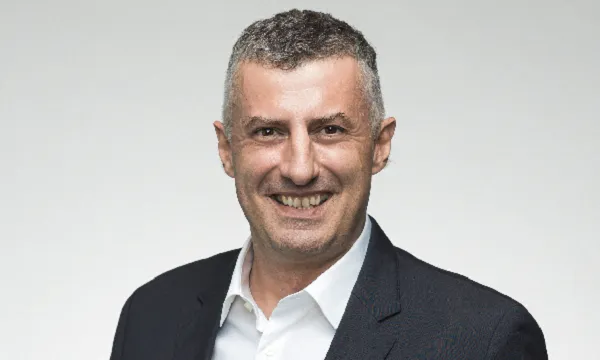
ENGIE seeks turnaround in the Philippines' coal dependency
It is working with a portfolio of sectors in the country to invest in low-carbon energy to meet the country’s power demands.
In a bid to tap into the Philippines’ renewable energy potential, of which non-hydro renewable power capacity is expected to grow 11.2% by 2030, French electric utility firm ENGIE has invested its fair share into the country’s power sector - from clinching a five-year contract to manage energy efficiency at Mactan-Cebu International Airport (MCIA) to switching on what is said to be one of the country’s biggest cooling system (DCs) plants in Alabang’s Northgate Cyberzone.
In an interview with Asian Power, CEO for Southeast Asia Pierre Cheyron discussed the challenges continuing to face the Philippines’ energy industry, the new technologies the firm has implemented across its green projects, and the other opportunities it is looking at.
What are the pain points in the Philippines' energy industry that ENGIE wants to address?
PC: The Philippines’ population (forecast to grow by 32%) and demand for affordable energy (forecast to grow by 80%) are increasing for the period from 2017 to 2040. Coal-fired power plants are currently the country’s biggest source of electricity with an existing capacity of 8,844MW in meeting the needs of businesses and consumers. As a large geographical collection of over 7,000 islands, the Philippines has long been particularly vulnerable to extreme weather and drastic climate change has caused the nation to suffer from more often and severe violent storms.
As the energy transition towards renewables gains more momentum, the authorities, businesses and consumers in the Philippines are expecting and demanding for low carbon solutions that are efficient and cost effective.
This is where ENGIE is playing as an active partner to achieve our common goals towards zero-carbon transition. We are working closely with firms across many sectors in the Philippines, including real estate, airport, hotels, retail and industrial with a wide portfolio of our integrated energy solutions and services covering District Cooling Systems, Cooling Plants, Energy Efficiency, Integrated Facilities Management, Solar, Smart Cities solutions and more, to meet the country’s increasing demand for energy but in a greener and more cost-effective way.
What other opportunities are present in the Philippines' energy sector? Would you be able to describe any future avenues the firm is looking at?
Across the Asia-Pacific region, countries like the Philippines have increasingly made combating climate change a priority. For instance, the Philippine government recently signed the Energy Efficiency and Conservation Act (Republic Act 11285), recognising the urgent need to institutionalise, and provide grant incentives for, energy efficiency and conservation projects across the country, whilst overall enhancing the efficient use of energy in the Philippines with established energy efficiency roadmaps, programmes and targets. This marks a significant milestone and leadership for energy efficiency and conservation in the Philippines.
However, we know that the energy world itself is experiencing a far-reaching revolution under the evolution of new technologies, a need for varied public and private consumption, and decentralised production methods, underpinned by the growing role of renewable energies.
As a forerunner in the global energy transition, we are committed to partner and contribute with the Philippines to achieve our common goals by investing in low-carbon energy production such as renewable and solar energy, bringing our expertise in digital energy innovations and using decentralised approaches to get closer to the ecosystem.
What is your vision for ENGIE this year? In the next three to five years?
We have witnessed that increasingly, more and more people have access to energy. According to the United Nations Development Programme (UNDP), between 2000 and 2016, the number of people with access to electricity increased from 78 to 87 percent of the world population. While it indicates that we are one step closer to achieving our goal of providing universal access to energy, the world’s reliance on non-green energy means that it is achieved at the expense of the planet.
This is where we want to play a part – with a focus on client solutions and renewable energy, we are committed to solving real-world challenges across the Asia Pacific region and accelerating the zero-carbon transition by delivering sustainable solutions “as a service” to our customers.
We aim to work alongside governments, our valued partners and stakeholders to support the region’s aim of economic development through efficiency gains. Together, we believe in turning the vision of progress into reality.
With your case studies in the Philippines, have you implemented new technologies, and can you walk us through how these work?
iBMS:
We have implemented iBMS, a cloud-based Building Management System designed to improve the management of buildings by looking at patterns, events correlation, anomaly detection and real-time data on complex, energy consuming assets.
Some key projects where we have implemented this are:
- At Northgate District Cooling plant, which is a joint venture between ENGIE and Filinvest Land Inc.
- This is the first of its kind District Cooling plant in the Philippines, serving buildings and businesses within the IT park to bring about energy efficiency, cost saving and meet the energy demands of the country.
- At a prestigious country club in the Philippines
- This performance optimization tool provides remote control and monitoring of all HVAC systems to reduce energy consumption and guarantee members’ comfort.
IoT:
Another technology we have implemented is Internet of Things, or IoT. This is a cloud-based platform designed to gather a large amount of data at a reduced cost.
Energy systems are increasingly digitised, making it possible to identify needs in real time and to provide energy at the right moment. ENGIE leveraged IoT and digital remote control and monitoring systems to help organisations enhance energy efficiency.
Our solutions are developed to meet our clients’ demands to connect many buildings (shops, outlets, branches, etc.) all over the country to one unique platform.
The benchmark of real-time indicators such as customer satisfaction, customers footfall, energy consumption, indoor temperature and humidity provides our clients with recommendations to improve the customer journey and reduce operating costs country-wide.
In Singapore, we partnered UnaBiz and KK Women’s and Children’s Hospital (KKH) to successfully pilot energy-efficient sensors that provide KKH with remote temperature and humidity monitoring capability. These sensors have allowed KKH to intervene early when temperature and humidity anomalies arose and provide better care to patients.

In Perak, Malaysia, we have partnered with UAC Berhad to help them improve the energy efficiency of their compressed air system by more than 18 percent in six months – by leveraging our state-of-the-art air compressors and digital remote control and monitoring system to ensure real-time efficiency monitoring and reliability of their compressed air supply.
Regarding the solar energy rooftop systems developed by Filinvest-ENGIE Renewable Energy Enterprise, Inc. (FREE), what were the goals of this project and how did ENGIE achieve them?
In October 2018, ENGIE signed a joint venture agreement for the incorporation of Filinvest-ENGIE Renewable Energy Enterprise Inc (FREE), to develop solar energy rooftop systems for Philippine customers. This is ENGIE’s second collaboration with Filinvest Development Corporation, through their subsidiary, FDC Utilities, Inc,. The solar energy rooftop systems are expected to provide customers with a saving of up to 30 percent in energy spend while reducing carbon footprint and increasing grid reliability.
This further strengthens our partnership with Filinvest, who shares the same vision as ours in terms of providing long-term sustainable solutions for the country and its population.
Regarding the District Cooling System (DCS) plant in Northgate Cyberzone, what were your KPIs for the plant and how have they fared over time?
The District Cooling System (DCS) in Filinvest City, Alabang is one of ENGIE’s most notable projects in the country. ENGIE Services Philippines partnered with Filinvest Land Inc. to form a joint venture called the Philippine DCS Development Corporation (PDDC) to help meet the energy demands of the growing Business Process Outsourcing sector in the country.
Located in Northgate Cyberzone, Alabang, Muntinlupa City, the 12,000-ton (installed capacity) centralised district cooling plant is the largest of its kind in the country, serving buildings and businesses within the IT park. The plant caters to 16 buildings through a 3.4-kilometre underground distribution network of steel pipes with a life span of 40 years.
Since its implementation in 2017, the DCS has provided 24/7 cooling for office buildings that host BPO operations at Northgate Cyberzone, helping customers improve their energy efficiency by 39 percent. Powered by a single District Cooling plant, the Northgate Cyberzone Network provides a peak cooling load of 10,000 Refrigeration Tons for buildings at 99.8 percent availability guaranteed. The DCS also delivered a 39 percent reduction of electricity consumption per year, while delivering 18,400 tons of CO2 savings a year.
The Northgate Cyberzone DCS is an important milestone for PDDC as it serves as an exemplary model for many of PDDC’s other projects that are being developed to cater to the fast-growing BPO market in the Philippines. Additionally, it gives Northgate a substantial commercial edge to attract new tenants within their IT Park and is in line with the Philippine government’s drive towards green energy.
Regarding ENGIE’s partnership with GMR Megawide Cebu Airport Corporation (GMCAC) to enhance Mactan-Cebu International Airport’s energy efficiency using digital technologies, what was ENGIE's role in the partnership? Why did you choose GMR Megawide Cebu Airport Corporation? What were your key takeaways from your project with GMCAC?
We are working with the consortium, GMR Megawide Cebu Airport Corporation (GMCAC), for the provision of facilities management services to Mactan-Cebu International Airport (MCIA) Terminal 1 and 2 for a period of five years. Through this partnership, ENGIE deployed our airport operations, services and engineering knowledge with adoption of digital solutions to digitise the maintenance operations of the airport in enhancing their cost efficiency and productivity. Digital technology is playing an increasingly vital role in automating and controlling energy system performance to achieve efficiency goals.

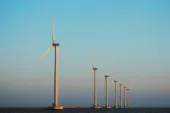

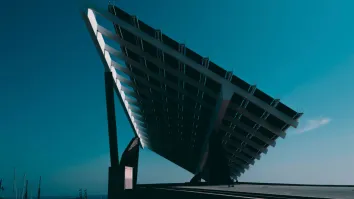
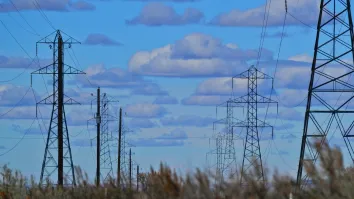
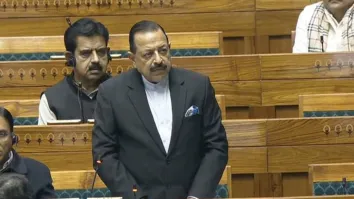













 Advertise
Advertise






